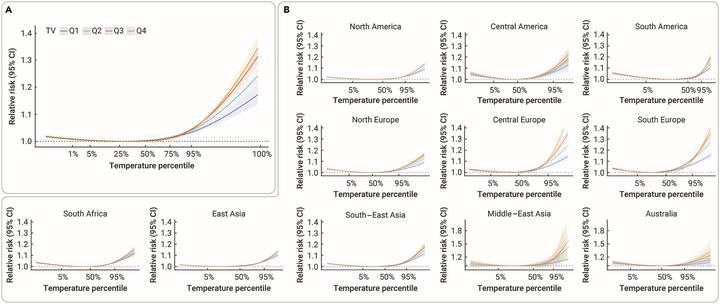
Resumen
Studies have investigated the effects of heat and temperature variability (TV) on mortality. However, few assessed whether TV modifies the heat-mortality association. Data on daily temperature and mortality in the warm season were collected from 717 locations across 36 countries. TV was calculated as the standard deviation of the average of the same and previous days’ minimum and maximum temperatures. We first used location-specific quasi-Poisson regression models with an interaction term between the cross-basis term for mean temperature and quartiles of TV to obtain heat-mortality associations under each quartile of TV, then pooled estimates at the country, regional, and global levels. Results show the increased risk in heat-related mortality with increments in TV, accounting for 0.70% (95% confidence interval [CI], -0.33–1.69), 1.34% (95% CI: -0.14–2.73), 1.99% (95% CI: 0.29–3.57), and 2.73% (95% CI: 0.76–4.50) of total deaths for Q1–Q4 (1st quartile–4th quartile) of TV. The modification effects of TV varied geographically. Central Europe had the highest attributable fractions (AFs), corresponding to 7.68% (95% CI: 5.25–9.89) of total deaths for Q4 of TV, while the lowest AFs were observed in North America, with the values for Q4 of 1.74% (95% CI: -0.09–3.39). TV had a significant modification effect on the heat-mortality association, causing a higher heat-related mortality burden with increments of TV. Implementing targeted strategies against heat exposure and fluctuant temperatures simultaneously would benefit public health.